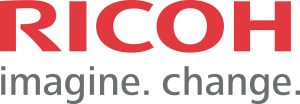Automation: unlocking the secret to next-gen school security

Australian schools are waking up to their cybersecurity risks, but automation may be the overlooked tool in the battle to keep your people and your data safe.
Protecting classrooms and administration
Results from the 2018/2019 BDO and AusCert Cyber Security Survey showed that education was one of the sectors most affected by cyber-attacks last year. Schools are prime targets because of the student and employee data they collect and store. There is also an impression that schools are less secure against attacks.
But data breaches and information getting into the wrong hands is more likely to be because of human error or a failure to follow information handling policies - not necessarily through cyberattacks such as malware or phishing.
Keeping up with school data compliance
Like other organisations, schools are required to comply with the new Australian Notifiable Data Breaches (NDB) regulations introduced in 2018. Organisations “must notify affected individuals and the OAIC when a data breach is likely to result in serious harm to an individual whose personal information is involved.”
For schools, this data may include:
- contact details
- banking information
- photos or videos
- medical records
As compliance increases and every process risks failure through human error or otherwise, automation is the unlikely hero of secure data collection, storage and infrastructure.
Student risk from process failure
Process failure through data breaches can not only impact data security but also put children at risk by allowing inadequate referee checking, Working With Children checks being missed and poor induction processes.
Schools need to automate their processes to allow checks and balances, and audit trails offering insights into all activities. Processes that highly benefit from automation include:
- student and staff enrolments
- excursion and incident reporting
- student safety and intervention
- financial processes such as purchase orders and accounts payable
How does automation help with security?
Ricoh has worked closely with schools across Australia for many years helping them find the right technology solutions for their situation. They have a range of solutions to reduce the risks associated with manual handling.
- Automation for secure document storage
Most schools still rely on paper documents to store sensitive information like student files and academic results.
Moving paper-based forms into digital eforms reduces the risk of paper forms being accessed inappropriately.
Ricoh’s secure document and records management platform scans, categorises and stores your school data in a secure repository. This helps eliminate privacy issues caused by incorrect record disposal or insecurely storing paper and digital content.
- Automation for secure data collection
Sensitive personal information like medical information and activity permissions are regularly collected by schools.
Ricoh has an internet-based portal platform to make data collection more secure. Parents can log in to the system to enter information securely rather than relying on paper-based forms. The data can be easily captured, verified and sent where it needs to go - automatically.
This means all sensitive information such as enrolment information and permission forms can be stored digitally. Storing the information securely behind the school’s firewall reduces the risk of a data breach.
Automating the process also improves administrative efficiency by reducing manual handling of paperwork.
- Automation for secure infrastructure
Schools are increasingly investing in collaborative and interactive learning technologies that promote personalised learning experiences. This relies on robust, scalable infrastructure and security must be a key consideration.
Automating security and monitoring tasks can reduce threats caused by outdated software or hardware.
Technology is one part of the solution
Next-gen security needs to be a high priority for K-12 organisations. Technology is vital to the solution, but there is more involved:
- Governance groups across a range of stakeholders focussed on automation and security
- Ongoing cybersecurity awareness and training for staff and students
- Establishing and enforcing security and privacy policies and procedures
Secure schools
Schools need to rethink their security needs. Automation of data collection, processes and storage is a step towards a safer process.
Ready for digital transformation in your school?
The first step is finding the right workplace technology partner to design a customised solution that works for your school. Contact Ricoh today at [email protected] or call 13 RICOH.
Do you have an idea for a story?Email [email protected]







